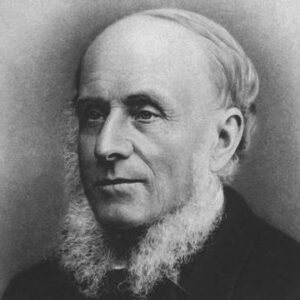Alexander Bain was a well-known inventor and clockmaker who created a number of instruments, including the electric clock, chemical telegraph receivers, punch-tapes, and the facsimile machine (also known as the fax machine). An earth battery, wire insulation, an electric fire alarm, inkstands, ink holders, and a ship’s log are among his other innovations. He was the sole owner of all of his inventions’ patents. This Scottish inventor also built the railway telegraph links connecting Glasgow and Edinburgh. The National Maritime Museum of London, the London Science Museum, the Royal Scottish Museum, and the Deutsches Uhrenmuseum all have examples of his electric clock invention. Between Paris and Lyon, his upgraded fax service was launched. Pantelegraph was the name of this service. He invented two types of chemical recorders while working on the chemical telegraph. The tape method, which was utilized for general purposes, was one of these approaches. For big terminals, he created the other way. Only the Boston-Montreal line in America was using his chemical telegraph by 1859. He is credited with inventing an automatic wind instrument playing method that involves manipulating a band of perforated paper that controls the supply of air to the pipes.
Childhood and Adolescence
Alexander Bain was one of a crofter’s thirteen children. He developed an interest in science after attending a science lecture when he was just 12 years old, despite not excelling in academics.
Career of Alexander Bain
In 1837, he traveled to London to study the craft of clockmaking. He worked as a journeyman in Clerkenwell after arriving in London. He used to attend lectures at the Polytechnic Institution at the same time.
He worked on electric clocks for the most of the time between 1840 and 1860. His mantel clock was made with a complicated design. It operated on the basis of an electro-magnetic pull push.
In Hanover Street, he established his own workshop. He patented his electric clock on January 11, 1841. This clock had a pendulum that moved thanks to electromagnetic impulses.
He invented the concept for using electricity to regulate railway engines in December 1841, along with Lieutenant Thomas Wright RN.
His concept to reverse the needle telegraph that Ampere, Wheatstone, and others invented earlier is included in one of his patents. To make signals, he used a hung moveable coil between the poles of a stationary magnet.
He worked on an experimental facsimile machine from 1843 until 1846. He used a clock to synchronize the movement of two pendulums for line-by-line scanning of a message for this purpose.
He also designed arrangements of metal pins on an insulating material cylinder for message transmission. He used a flexible, slender electric tool that could transmit on-off pulses to scan the pins.
He invented a chemical telegraph on December 12, 1846. The Morse and other telegraphs used at the time were fairly slow. He intended to make a readable mark on a moving paper tape using signal current.
He chose to soak the paper tape in a solution of potassium ferrocyanide and ammonium nitrate. When a current was sent through the paper after it had been soaked in this mixture, it produced a blue mark.
This mechanical mechanism used to generate markings at such a fast rate that hand signaling couldn’t keep up. As a result, he devised a system of automatic signaling using perforated paper tape.
He devised a chemical telegraph that connected Paris and Lille. This system was capable of processing 282 words in 52 seconds. On the wires of England’s Electric Telegraph Company, his telegraph was used.
In 1850, he developed a more advanced facsimile machine. Frederick Bakewell had secured a patent for his enhanced version of the ‘picture telegraph’ two years prior, which was his terrible luck.
It was later discovered that both Bain’s and Bakewell’s mechanisms produced low quality photographs. Furthermore, the transmitter and receiver in their equipment were not perfectly synchronized.
Henry O’Reilly of America first utilized his chemical telegraph in 1850. Later on, Samuel Morse claimed ownership of the paper tape and alphabet used in the telegraph.
Personal History and Legacy
He had a son and a daughter and was a widower. Both of his children were living in another country. His son lived in America, but his daughter lived on the continent, according to some reports. His body was interred on Kirkintilloch after his death.
His ideas allowed him to amass a sizable fortune. He later ran into financial difficulties due to a lack of sufficient investment. Prime Minister William Ewart Gladstone granted him a Civil List annuity in 1873.
Wheatstone’s automatic sender was inspired by his creation of the chemical telegraph. The main BT building in Glasgow is named Alexander Bain House in recognition of his inventions.
Estimated Net Worth
Alex Bain is one of the wealthiest soap opera actors and one of the most popular. Alex Bain’s net worth is estimated to be $1.5 million, according to Wikipedia, Forbes, and Business Insider.
Trivia
In 1840, this gifted innovator showed Sir Charles Wheatstone, an English scientist and inventor, his famous models of electric clock. Wheatstone concluded after seeing such models that the clocks had no future.


